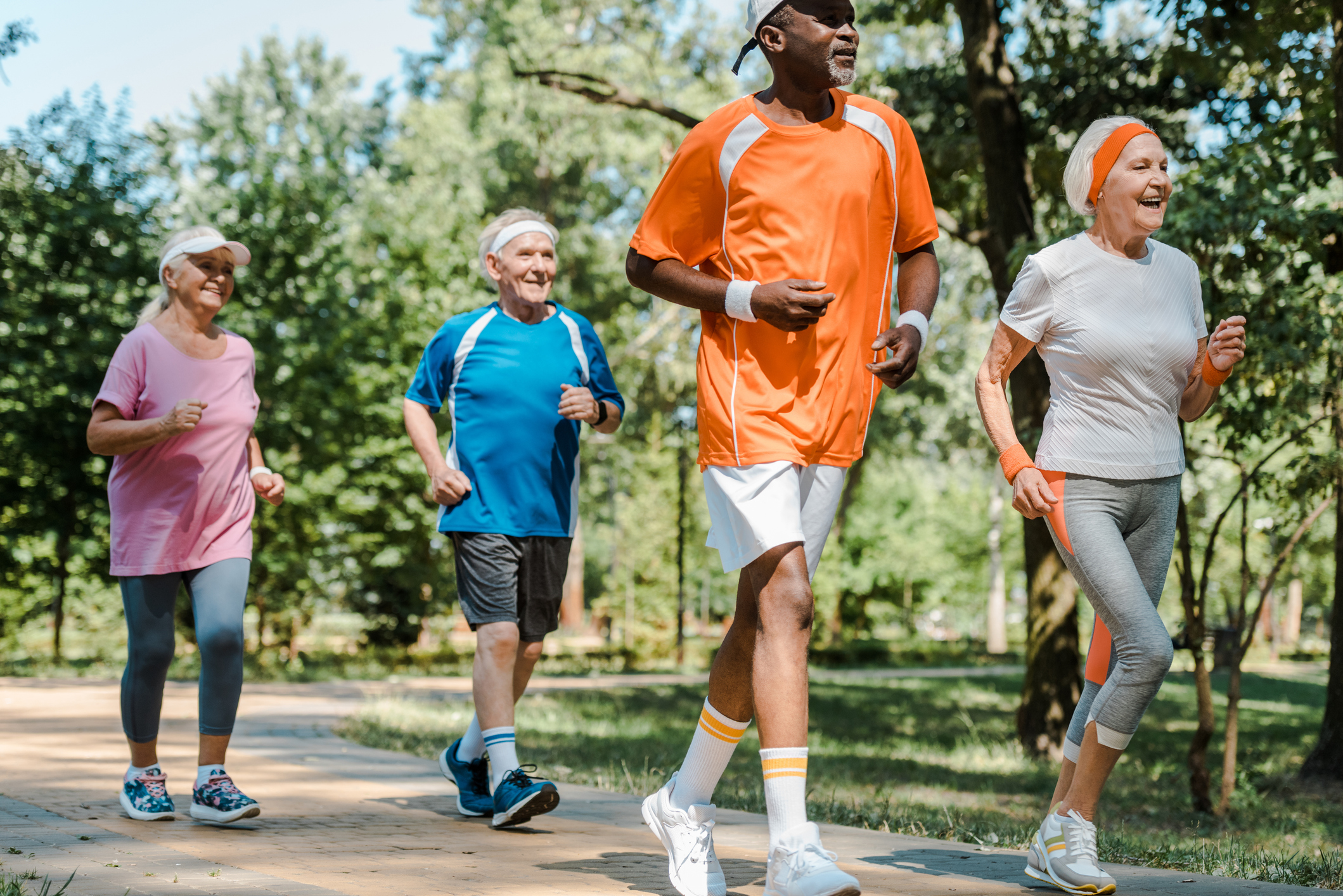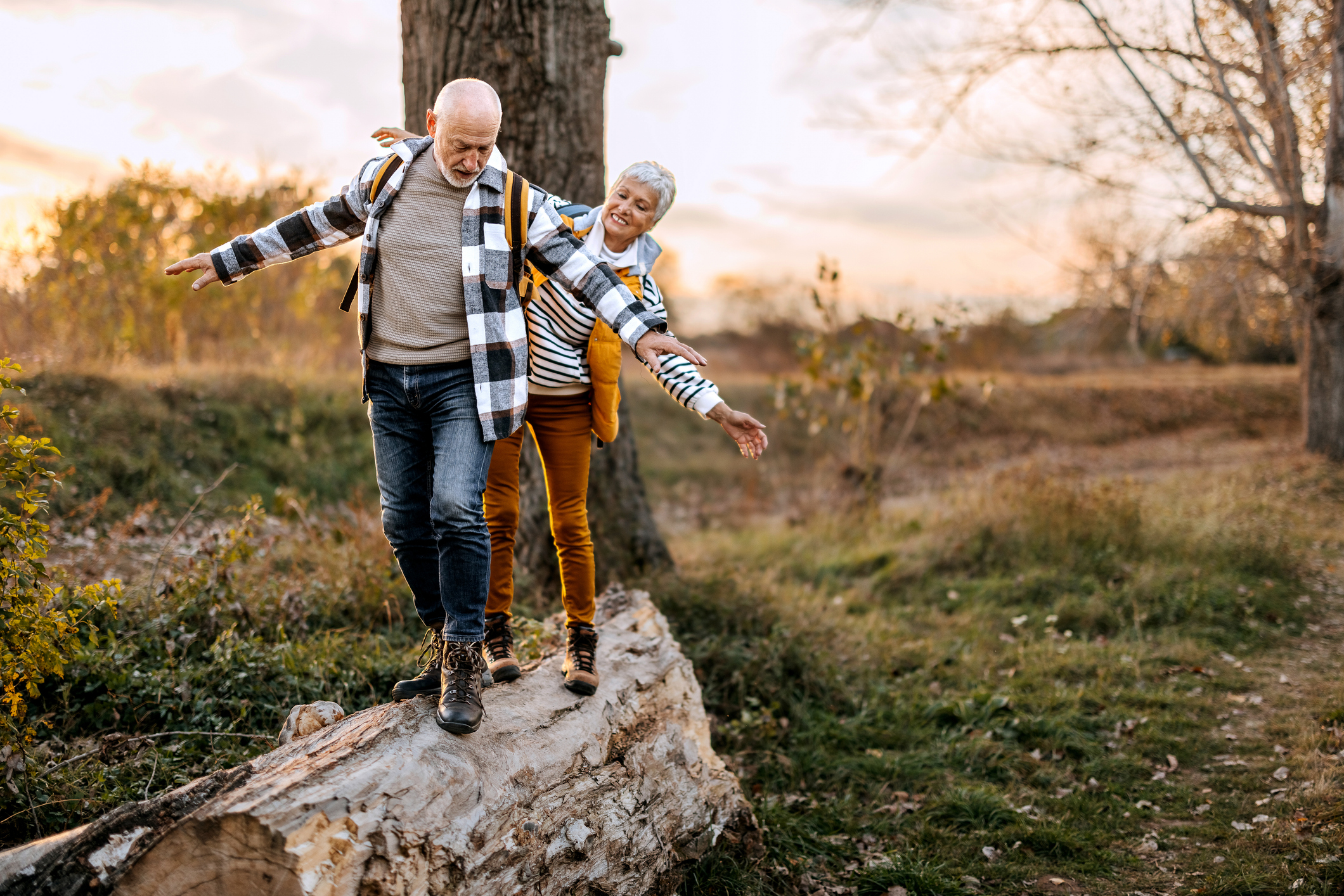SUMMARY: Older adults (OAs) should prioritize the important actions that support successful aging like cardio…

THE IMPORTANCE OF DOING HARD THINGS
SUMMARY: To age well, older adults (OAs) must regularly do “hard things” that challenge their physical capabilities. The most important “hard thing” is resistance exercise (RE), but OAs often don’t make RE challenging enough to be beneficial. Use the repetitions-in-reserve (RIR) concept to determine an effective level of RE challenge/hardness for you.
INTRO
Some OAs adapt a “take it easy” attitude about retirement, enjoying the grandkids or focusing on hobbies, but taking it easy is not helpful for maintaining our physical capabilities as we age.
Aging brings a natural loss of functional ability and a marked increase in our chronic disease risk, which can also often negatively impact our functional fitness. So, we really must focus on optimizing our physical function and minimizing our chronic disease risk.
To preserve our functional abilities as we age, we need to adapt a self-challenge mentality and regularly do “hard things” which put us right at the limit of our current physical capabilities. If we don’t do those “hard things” right now, then the easy things of today will soon enough become the hard things of tomorrow, and before too many more tomorrows, they will become impossible things.
The most important “hard thing” you need to be doing is resistance exercise (RE)[1] , which I’m very passionate about helping my OA clients implement effectively in their lives.
RESISTANCE EXERCISE INTENSITY
RE is hard work and I rarely look forward to it[2], but it’s absolutely essential for optimal aging, so I personally get it done and, of course, help my clients to get it done. RE is essential for optimal aging? Yes, there’s nothing else which has a more wide-ranging positive impact on OA’s physical function as RE – if it’s done right[3]– and “done right” is often about intensity of effort, i.e., making it a “hard (enough) thing”. And, if done right, RE literally supports your ability to perform any other kind of physical activity or exercise you need or want to do!
We can’t completely stop the physical decline of aging with RE and other forms of exercise, but we can slow it down significantly – but only if we regularly challenge ourselves by doing hard enough physical things. If RE isn’t challenging enough, it’s “underdosed” – under the threshold needed to create a positive physiologic outcome or result – so we can’t capture RE’s value to help us blunt our trajectory of physical decline.
Reducing the intensity/hardness RE can be appropriate for certain situations like:
a) you’re new to RE or you’ve had a significant layoff from RE
b) you’re starting back to RE from an injury/surgery/illness
c) you have a medical/orthopedic reason which compels you to modify your RE intensity
d) you have a vulnerable joint or body part and aren’t sure it can tolerate full intensity
e) within your RE session, you’re prepping/practicing/warming up for a “hard” effort[4] to come
With the situations listed above, understand the “hardness” of RE is scaled back a bit, but never completely eliminated.
Before discussing how to gauge RE intensity, we need some basic RE terms. For RE, we apply resistance to a movement pattern and perform that movement repeatedly until we’re forced to stop[5]. Each movement “repeat” is a repetition (rep), and a sequence of reps is called a set of reps.
An effective set of reps with a given resistance might be as few as 5 or as many as 30 reps – we actually have a broad rep range available to create positive results – but only if the intensity of effort is high. To be effective, you must proceed to a point very close to your physical limits; this means the amount of resistance you’re using will dictate the number of reps you can perform (more resistance means less reps), as opposed to you stopping at some pre-determined number of reps.
REPETITIONS-IN-RESERVE
So how hard does RE need to be? And, how do we monitor that degree of hardness or intensity? The most accessible strategy to gauge the intensity/hardness of RE is a concept called repetitions-in-reserve (RIR).
To use RIR, each time you stop a set of reps, ask yourself: “how many reps was I still capable of performing if I pushed myself to the absolute physical limit for this set of reps”? Your answer is your RIR for that set. If you think you still have 5 or more RIR, then your effort is probably not sufficiently hard enough to stimulate a positive physical adaptation that will stave off the physical declines of aging[6]. The sweet spot for best positive physical adaptation is probably no more than 2-3 RIR[7] – but as mentioned previously it’s possible you may have a reason to keep your intensity lower for the moment.
WHY RE IS THE NUMBER-0NE “HARD THING”
Why is RE the number one preferred “hard thing” for OAs?
Because RE stands alone at the top as an anti-aging strategy: You won’t find such a complete package of benefits that counter physical aging with any other form of physical activity. Regular RE creates a physical resilience, capability & competence that is unparalleled and unreachable with other forms of physical activity!

To grasp RE’s anti-aging power, understand that the functional/physical attributes that we need to protect us from physical decline and maintain our ability to get around and enjoy life are muscle mass, strength, power/speed, and dynamic balance. The graph above shows how we lose these attributes with age[8] – but regular effective RE enhances those physical attributes to create the push back we need to slow down our functional loss to move each of those functional aging curves to the right (more function at any age).
Regular RE has many other additional benefits: RE enhances bone density/strength, cognition, blood sugar control, body composition, movement confidence, appearance and reduces fall risk. RE can also help us manage common chronic conditions like osteoarthritis, often comparable to medications. And, regular RE also “toughens” our body so, if we do fall down, we are more resistant & resilient to injury.
TRY NOT TO ADAPT A “BETTER-THAN-NOTHING” ATTITUDE
It will also serve you well if you look to apply the concept of doing hard things to the rest of your physical activities[9], as the benefits will likely increase in proportion to how hard you challenge yourself.
Lastly, I really encourage you to adapt a self-challenge mentality and not fall into the “what I’m doing now is better than nothing” attitude. Often, I encounter OAs who walk as their only form of physical activity, perhaps believing “it’s better than nothing”. But this can limit your ability to age well because walking will not enhance or develop muscle mass, strength, power, or dynamic balance. Research does point to a dose-response longevity advantage with walking, but if you lack muscle mass, strength, power and dynamic balance, will you still be able to walk very well? And what, really, will those extra years look like?
FOOTNOTES:
[1] Also called weight training or strength training. The “resistance” to movement can come from elastic bands, cords, dumbbells, barbells, kettlebells, cable/pulley apparatus, or pin-selected weight stack machines and, sometimes, body weight. The “resistance” is often called a “load”.
[2] I do have a tremendous sense of fulfillment, satisfaction & accomplishment after each RE session.
[3] RE for OAs is a big topic with many things to consider, but this post focuses on the concept that RE is a powerful tool to combat aging, if RE intensity is kept high.
[4] For OAs performing RE, I like a 3-phase intensity sequence: 1) practice a movement pattern without resistance; 2) follow with a few repetitions with a lighter resistance; 3) use a resistance that makes it a truly “hard” effort. This 3-phase sequence allows for specific joint-tissue movement preparation and gives a preview of how an OA’s body is behaving that particular day.
[5] “Forced to stop” means you’re unable to perform reps with good form or you’re not able to move the resistance through the full movement pattern or, in some cases, discomfort or pain may be a factor.
[6] Unless perhaps you’re very, very deconditioned (very unfit or out-of-shape).
[7] There is some evidence that strength improvements can occur with more RIR than muscle mass improvements. But OAs need to optimize for both physical characteristics, so I would opt for a smaller RIR number for this reason, but tailored to the specific individual.
[8] Although the graph makes the loss look gradual, periods of inactivity in OAs induced by sickness, injury or surgery can produce surprisingly quick and steep reductions in physical function which are often very hard (and sometimes impossible) to bounce back from. An RE foundation can help your body have more muscle mass & resiliency in those situations so you lose less physical function & have a chance to bounce back.
[9] Especially aerobic/cardiovascular exercise.



